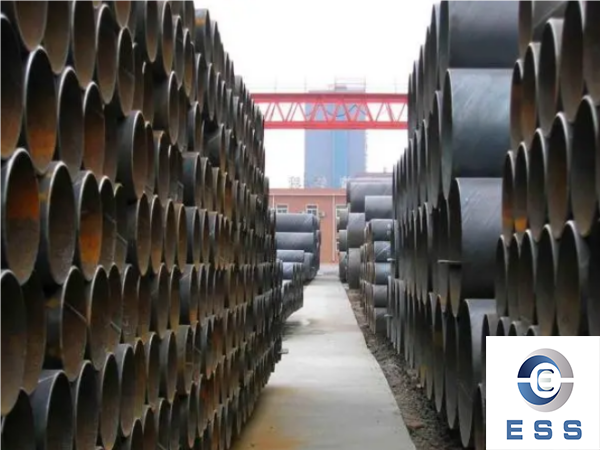Understanding the Manufacturing Process of Electric Resistance Welded Tubes
Introduction
Electric Resistance Welded tubes are a crucial component in various industries, including construction, automotive, and energy sectors. They are known for their strength, durability, and versatility, making them suitable for a wide range of applications. In this article, we will delve into the manufacturing process of ERW tubes, exploring the steps involved, the equipment used, and the advantages of this particular production method.

What are Electric Resistance Welded Tubes?
Electric Resistance Welded (ERW) tubes, also referred to as Electric Welded Pipes (EW Pipes), are hollow cylindrical structures made from strips or coils of steel. ERW tubes are produced using the electric resistance welding process, which involves the application of an electric current and pressure to join the edges of the strip or coil, resulting in a seamless tube.
Raw Materials
The manufacturing process of ERW tubes begins with the selection of appropriate raw materials. The most common material used is steel, due to its exceptional strength and malleability. Steel coils or strips are selected based on specific requirements such as diameter, thickness, and quality.
Slitting
Once the steel coils or strips are procured, the first step in the manufacturing process is slitting. Slitting involves the cutting of large coils into narrower strips, which will later be used to form the tube. Slitting machines equipped with rotating circular blades are used to cut the coils based on the desired width.
Forming
After the slitting process, the narrower strips are fed into a tube mill for forming. The tube mill consists of a series of rollers and forming stands that progressively shape the strip into a cylindrical form. The edges of the strip are prepared to create a proper weld seam.
Electric Resistance Welding
The electric resistance welding process is the core of ERW tube manufacturing. Once the strip has been formed into a cylindrical shape, it is passed through a set of welding rolls. The rolls apply pressure to bring the edges of the strip together, while an electric current is applied to generate heat at the joint. This heat fuses the edges together, creating a strong weld.
Sizing and Straightening
After the welding process, the welded tube goes through sizing and straightening operations. Sizing rolls or tools are used to give the tube its final dimensions and ensure its accuracy. Straightening machines then remove any residual curvature or deformation, producing a straight and uniform tube.
Cutting and Finishing
Once the ERW tube is straightened, it undergoes cutting and finishing operations. Saws or cutting machines are used to cut the tube into specific lengths according to customer requirements. The cut ends are then deburred to remove any sharp edges or burrs. Additionally, the tubes can undergo additional finishing processes such as polishing, galvanizing, or coating to enhance their appearance and protect against corrosion.
Testing and Quality Control
To ensure the quality and integrity of ERW tubes, various testing and quality control measures are undertaken. Non-destructive testing methods such as ultrasonic testing, eddy current testing, or visual inspection are used to detect any defects or irregularities in the weld seam or the tube itself. Physical and chemical tests are also conducted to verify the material properties and compliance with industry standards.
Advantages of Electric Resistance Welded Tubes
Electric Resistance Welded tubes offer several advantages over other manufacturing methods:
a) Cost-effective: The ERW process is highly efficient and cost-effective compared to other welding techniques, making it a preferred choice for mass production.
b) High productivity: ERW tube mills can produce a large volume of tubes in a relatively short time, ensuring quick turnaround for orders.
c) Consistent quality: ERW tubes exhibit consistent dimensions, wall thickness, and mechanical properties, providing reliability and uniformity in applications.
d) Versatility: ERW tubes can be produced in various sizes, shapes, and grades, making them suitable for a wide range of applications.
e) Strong welds: The electric resistance welding process creates robust and reliable welds, ensuring the structural integrity of the tubes.
Conclusion
Understanding the manufacturing process of Electric Resistance Welded tubes is essential for industries that rely on these versatile components. From the selection of raw materials to the final testing and quality control measures, each step in the process contributes to the production of high-quality ERW tubes. The cost-effectiveness, high productivity, and consistent quality of ERW tubes make them an integral part of numerous industries, serving as a reliable solution for various applications.













 Eastern Steel Manufacturing Co.,Ltd not only improve product production and sales services, but also provide additional value-added services. As long as you need, we can complete your specific needs together.
Eastern Steel Manufacturing Co.,Ltd not only improve product production and sales services, but also provide additional value-added services. As long as you need, we can complete your specific needs together.










